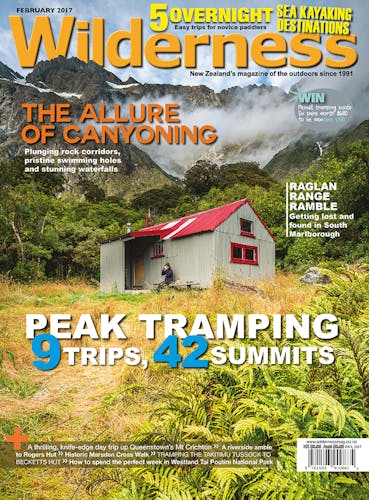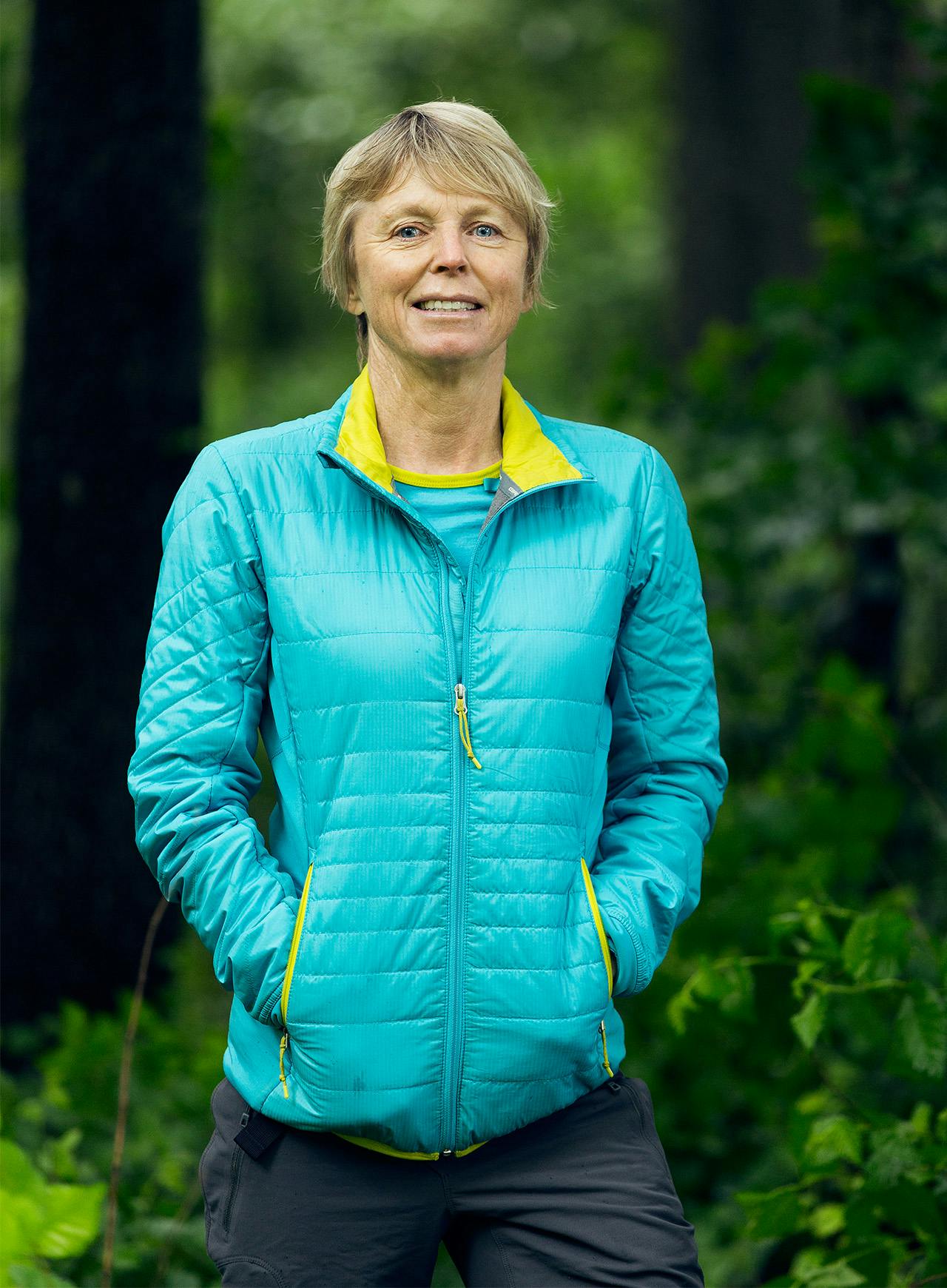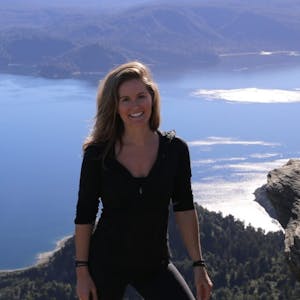Penny Webster has finished her 37-year mission to bag all of New Zealand’s 3000m peaks
Despite climbing 24 of New Zealand’s 3000m peaks, mountain climber Penny Webster still calls herself an amateur.
She’s ticked off a total of 72,000m, spread over the course of the past 35 years. Webster, now 57, finished her 24th summit last November.
To say Webster is modest is an understatement; she’s one of an estimated dozen Kiwis who’ve done the 3000m peak challenge since the mid-1950s.
Growing up in Christchurch, Webster says her childhood was full of tramping, camping, exploring for gold, and skiing. She joined her high school’s tramping club, and says it was on a trip home from Arthur’s Pass that the climbing seed was planted.
While on the train back to Christchurch, she saw a couple of climbers who were kitted out with big packs, dangling crampons, ice axes and ropes. “It was then I decided that I would climb big mountains too,” Webster says. Three years later, she began climbing in earnest.
She and her husband Charles Webster began ticking off some big climbs in the early 80s. During the course of a decade, they climbed 15 3000m peaks.
One of her most memorable climbs was a trip to the La Perouse Glacier in 1983. “We lived in a snow cave for 10 days and climbed six 3000m peaks,” she says. One of those peaks was Malaspina (3042m), on which she and Charles made a first ascent.
In addition to their impressive peak-bagging in the 80s, she and Charles travelled around the world, climbing in Chile, Argentina, Europe, India, Nepal, and east Africa. They traversed 25 countries, which was no modest feat. “Back then the modern concept of adventure tourism did not exist, and we travelled with folders full of background research, maps and guide books.” In the midst of their globe trotting, Webster competed internationally in mogul skiing.
Their return to New Zealand in the mid-80s found Webster dabbling in multiple competitive sports; she participated in nine Coast to Coasts and other adventure races.
The birth of her daughter in 1992 put a hold on her 3000m climbs, but she vowed she’d take it up again when Emily turned 18.
I knew the 3000m peak challenge was
going to make my life richer
And, as promised, Webster came back on the mountaineering scene in full force in 2010.
Her return coincided with the centenary of Freda de Faur, the first woman to climb Aoraki/Mt Cook. In honour of the intrepid female alpinist, Webster dressed as Freda for the centenary, hired a guide, and climbed Mt Cook for the sixth time.
Having already done 17 of the 24 peaks over 3000m, Webster decided she’d commit herself to finish the list. With Charles retired from climbing, Webster joined up with Jim Davidson and began ticking off the seven remaining peaks.
“I believe that we all need challenges in life, and whilst for me the 3000m peak challenge was going to be very demanding, I knew it was going to make my life richer,” Webster says. “I believed that it was was achievable. I am passionate about the outdoors, I like physical exercise and need goals – it keeps focus and discipline. It was competitive with the difference being that there is only one competitor – myself.”
Her final peak, La Perouse (3018m), was a four-day mission.
“There was satisfaction in that I achieved a personal goal, but what really is significant is the journey I have had. I feel privileged to have had the opportunity to share adventures with friends and to immerse myself in the beauty of the mountains,” she says. “Somehow, when you are stripped of all the niceties of life, as you are when mountain climbing, it helps keep life in perspective. It is soul food.”
The 3000m peak challenge
There’s currently little information on the history of the 3000m peak challenge, but Webster is in the midst of researching its origins and evolution.
Before the 3000m peak challenge, there was the 10,000ft challenge. Andy Anderson was the first person to officially climb all 17 10,000ft mountains, which were listed in the 1953 New Zealand Alpine Club Journal. Once referred to as the ‘short’ list, it was amended to 27 in 1957 to include all the prominent subsidiary peaks, such as the middle and low peaks of Aoraki/Mt Cook. Gordon Hassell and Alex Parton were the first two climbers to finish the ‘long’ list.
Metrication in 1976 altered the list yet again, and it turned into the 3000m peak challenge. Webster says changes to commonly used topographical maps over the years meant even more changes to the list.
There are two current lists being used for the challenge: the short and the long. The short list is the 24 3000m mountains, whereas the long list includes subsidiary peaks of Aoraki (Low Peak and Middle Peak), Haast (central and west), Haidinger, Elie De Beaumont, Sefton and Minarets, bringing the total to 32.
Webster says her research shows that 12 people have climbed all 3000m mountains since the challenge started, and that she knows of only a handful who are currently working towards it.
Penny Webster’s 3000m peak challenge
| Mountains | Year climbed |
|---|---|
| Aoraki/Mt Cook (3754m) | 1983 |
| Tasman (3497m) | 1982 |
| Dampier (3440m) | 2017 |
| Vancouver (3309m) | 1984 |
| Silberhorn (3300m) | 1983 |
| Malte Brun (3199m | 1981 |
| Hicks (3198m) | 2016 |
| Lendenfeld (3194m) | 1982 |
| Graham (3170m) | 1983 |
| Torres (3160m) | 2015 |
| Sefton (5151m) | 1982 |
| Teichelmann (3144m) | 1984 |
| Haast (3114m) | 2014 |
| Eli de Beaumont (3109m) | 1983 |
| La Perouse (3077m) | 2016 |
| Douglas Peak (3077m) | 1982 |
| Haidinger (3070m) | 1982 |
| Magellan (3049m) | 1984 |
| Malaspina (3042m) | 1984 |
| Minarets (east) (3040m) | 1982 |
| Aspiring (3025m) | 1908 |
| Hamilton (3025m) | 2013 |
| Dixon (3004m) | 2012 |
| Glacier Peak (3002m) | 1982 |








